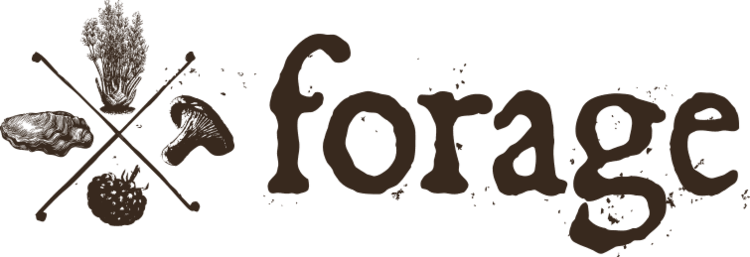Kelp Vs. Seaweed: Key Differences and Best Uses
Many people wonder if kelp and seaweed are the same thing, but they are in fact two different types of marine algae. While both kelp and seaweed are incredibly nutritious and versatile, they do have some key differences in terms of size and structure. They also have different habitat and growing conditions, nutrient composition, taste and culinary applications, and best uses.
You may also wonder how kelp and seaweed are similar. Both kelp and seaweed have been eaten in different ways by humans for thousands of years in coastal areas. These days, kelp and seaweed are mostly underutilized by recreational foragers, which is a shame because they are easy to acquire, abundant, and incredibly tasty and nutritious.
Let’s go over the difference between kelp and seaweed so you can know what to look for and how to utilize these delicious and abundant wild edibles.
Size and Structure
The most obvious difference between kelp vs seaweed is their size and structure. Kelp is a type of large, brown seaweed that can grow up to 100 feet in length, with long, wide blades resembling a leafy forest.
Seaweed, on the other hand, refers to a wide range of smaller, more delicate algae that come in a variety of colors, including green, red, and brown. Seaweed typically has a thinner, more flexible structure than kelp, with long, ribbon-like fronds.
Habitat and Growing Conditions
Kelp and seaweed also grow in different areas and conditions. Kelp is found in colder, nutrient-rich waters along rocky shorelines and in deep underwater forests. Seaweed can grow in a wide range of environments, from rocky intertidal zones to calm, shallow bays. Some types of seaweed are even found in freshwater.
Nutrient Composition
Despite their size and structure differences, kelp and seaweed are incredibly nutritious. Both are rich in vitamins and minerals, including calcium, iron, and iodine, and are a great source of dietary fiber. Kelp, in particular, is high in iodine, which is important for thyroid health.
When it comes to seaweed, it’s a rich source of antioxidants, including carotenoids and flavonoids, which have been linked to a range of health benefits, including improved heart health and lower risk of cancer.
Taste and Culinary Applications
Both kelp and seaweed contain a compound known as glutamates, which react with our taste buds to create a desirable and somewhat addictive quality. This sensation is often referred to in the culinary world as umami. If you want to add an incredible depth of flavor and umami to just about anything you’re cooking, using kelp or seaweed is an easy way to do so.
Kelp and seaweed also have different tastes and culinary applications. Kelp has a slightly sweet flavor and chewy texture, making it useful in soups and stews. It can also be dried and ground into a powder that can be used as a seasoning for a variety of uses.
Seaweed has a more delicate texture and ocean-like flavor. It is often used as a garnish or ingredient in salads, sushi, and other dishes.
Best Uses for Seaweed and Kelp
So, what are the best uses for seaweed vs kelp? Here are some ideas you simply can’t go wrong with:
Soups and Stews: Kelp is a great addition to soups and stews, where its chewy texture and umami flavor can add depth and complexity to the dish. Try adding a strip to any soup or stew for an added complexity of flavor. Dried or roasted seaweed can also be used to make a flavorful broth that can be the base of soups and stews.
Seasonings: Kelp powder is a great way to add a subtle umami flavor to your favorite dishes. Try sprinkling it on roasted vegetables, popcorn, or scrambled eggs. Seaweed that is dried and shredded is a key component of Furikake, a flavor-packed seasoning mixture used to boost flavor in sushi and rice bowls.
Salads and Sushi: Seaweed is a popular ingredient in salads and sushi, where its delicate texture and slightly salty flavor can add a refreshing, oceanic twist to the dish. Add some to your next salad, or wrap your sushi rolls in nori.
Snacks: Some types of seaweed, such as nori, can be roasted and eaten as a snack. They make a great healthy alternative to potato chips or other salty snacks. The tubular stalks of kelp can also be sliced and pickled with a mixture of water, vinegar, salt, and herbs much like cucumber pickles.
Supplements: Both kelp and seaweed can be found in supplement form, often marketed as a source of iodine or other minerals. If you are looking for natural ways to add these nutrients into your diet, kelp, and seaweed is an excellent way to boost your vitamin and mineral intake.
Final Thoughts
If you live in a coastal area and want to get started with foraging, collecting seaweed and kelp is very beginner-friendly because of their abundance and versatile use in your kitchen.
Once you familiarize yourself with a few different types of kelp vs seaweed that can be foraged in your area, harvesting them is as easy as simply taking what you need from where they are commonly found. Kelp and seaweed are not difficult to find, and they are still elusive, so taking home enough for all sorts of recipes is a breeze.
There are numerous ways to eat kelp and seaweed, all of which are delicious and absolutely worthwhile. Not only will adding these ingredients to your food create new and unique flavors, but they also have many important health benefits not found in many other foods.
If you’ve never tried kelp or seaweed and you want to give foraging a try, it doesn’t get much better than kelp or seaweed. Just remember to respect the environment, only take what you need, and leave rare and threatened kelp or seaweed species alone!


